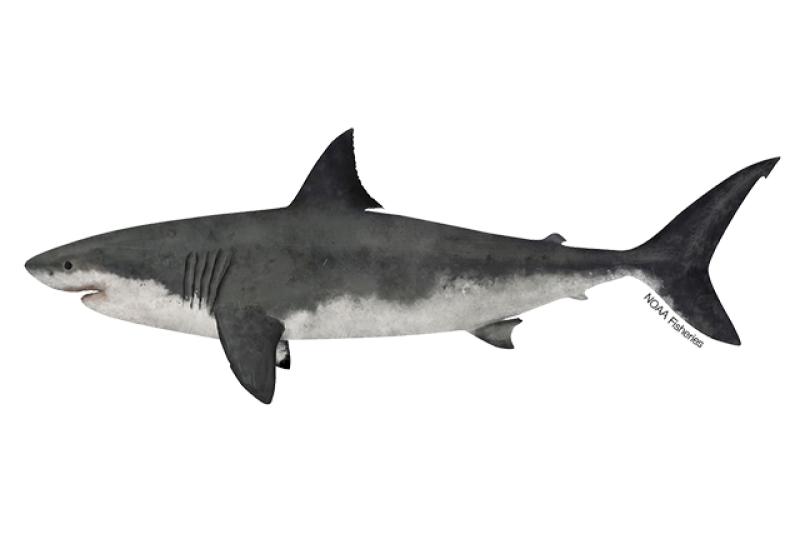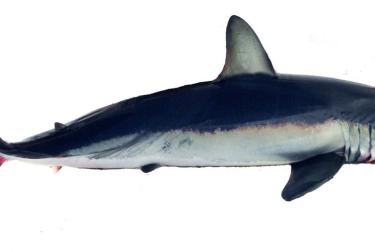Atlantic Shortfin Mako Shark
Isurus oxyrinchus

Quick Facts
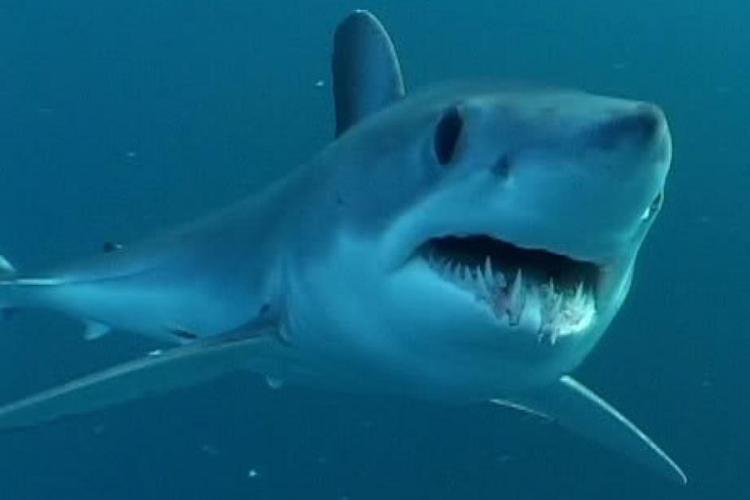 Mako shark. Credit: NOAA Fisheries
Mako shark. Credit: NOAA Fisheries
Mako shark. Credit: NOAA Fisheries
About the Species
 Mako shark. Credit: NOAA Fisheries
Mako shark. Credit: NOAA Fisheries
Mako shark. Credit: NOAA Fisheries
U.S. fishermen may not land or retain Atlantic shortfin mako sharks.

Population
The stock is overfished, but the fishing rate established under a rebuilding plan promotes population growth.

Fishing Rate
Reduced to end overfishing.

Habitat Impact
Not applicable—Atlantic shortfin mako sharks cannot be harvested.

Bycatch
Regulations are in place to minimize bycatch.
Population Status
- According to the 2017 stock assessment (and updated projections from 2019), shortfin mako sharks are overfished and subject to overfishing. Summary stock assessment information can be found on Stock SMART.
- NOAA Southeast Fishery Science Center staff work with the International Commission for the Conservation of Atlantic Tunas to assess the status of shortfin mako sharks in the Atlantic.
Appearance
- Shortfin mako sharks have very pointed snouts and long gill slits.
- They have dark blue/gray backs, light metallic blue sides, and white undersides.
- Shortfin mako sharks can be differentiated from longfin mako sharks. Compared to shortfin mako sharks, longfin mako sharks have much longer pectoral fins and larger eyes, a different body shape, and the underside of their snout is darker.
Biology
- Shortfin mako sharks grow slowly, reach up to 13 feet long, and can live to be over 30 years old.
- They are not able to reproduce until about 8 years old (~6 feet) for males and 19 years old (~9 feet) for females. They have a 3-year reproductive cycle and a gestation period of approximately 18 months.
- Mating occurs from summer to fall. Eggs are fertilized internally and develop inside the mother.
- Females bear live pups, which are approximately 2 feet long when born. This large size at birth helps reduce the number of potential predators and enhances the pups’ chance of survival.
- Mean litter size is 12, and up to 30 pups have been reported, though scientists have only examined a handful of litters.
- Shortfin mako sharks are aggressive predators that feed near the top of the food web on marine fishes such as bluefish, swordfish, tuna, marine mammals, and other sharks.
- They have few predators, mainly larger sharks that may prey on smaller shortfin mako sharks.
Where They Live
Range
- Off the East Coast, Atlantic shortfin mako sharks are found from New England to Florida, in the Gulf of America (formerly Gulf of Mexico) from Florida to Texas, and in the Caribbean Sea.
- They are highly migratory and can travel across entire oceans.
Habitat
- Shortfin mako sharks are a pelagic species. Their habitat ranges widely in the upper zones of the oceans.
- Juveniles are common in coastal waters, from the low-tide line to the edge of the continental shelf. Adults are primarily found offshore.
Fishery Management
- NOAA Fisheries, through the Atlantic Highly Migratory Species Division, manage the Atlantic shortfin mako shark fishery in the United States.
- NOAA Fisheries implemented regulations consistent with new ICCAT requirements adopted in 2021, based on the 2017 stock assessment.
- U.S. fishermen may not land or retain Atlantic shortfin mako sharks.
- If retention is allowed by ICCAT in the future, NOAA Fisheries could increase the shortfin mako shark retention limit, based on regulatory criteria and the amount of retention allowed by ICCAT. Until that happens, the retention limit will remain at zero.
- Atlantic sharks are managed under the Consolidated Atlantic Highly Migratory Species Fishery Management Plan:
- Permits are required, and only a limited number of permits are available.
- Commercial quotas and limits on how many sharks can be landed per fishing trip.
- Gear restrictions and requirements.
- Fishing season is generally year-round, but individual commercial shark fisheries close when the quota is reached.
- Shark dealers are required to attend Atlantic shark identification workshops to help them better identify shark species.
- Prohibited species—there are more than 20 species of sharks that cannot be landed (e.g., white, dusky, basking, longfin mako, night). Some of these species look similar to the species that can be landed. The recreational shark identification can help with identification.
- The Shark Conservation Act requires that all sharks, with one exception, be brought to shore with their fins naturally attached.
- Compliance guides are available for all commercial and recreational regulations across Atlantic highly migratory species fisheries.
- Management of highly migratory species, such as mako sharks, is complicated and requires international cooperation.
- A shark that is off the coast of Florida one week could be caught off the coast of Mexico the next. These resources must be managed both in the United States and at the international level.
- The United States negotiates with Regional Fisheries Management Organizations—including the International Commission for the Conservation of Atlantic Tunas, the Food and Agriculture Organization of the United Nations, and the Convention on International Trade in Endangered Species of Wild Fauna and Flora—to enhance shark management worldwide.
- While U.S. fishermen caught approximately 3 percent of the overall harvest of shortfin mako shark in the North Atlantic in 2020, NOAA Fisheries continues to take action at the international level to end overfishing of this species.
- A domestic rebuilding plan is in place for this stock.
Harvest
- As of July 5, 2022, U.S. fishermen may not land or retain Atlantic shortfin mako sharks,
Scientific Classification
- Off the East Coast, Atlantic shortfin mako sharks are found from New England to Florida, in the Gulf of America (formerly Gulf of Mexico) from Florida to Texas, and in the Caribbean Sea.
- They are highly migratory and can travel across entire oceans.
- Shortfin mako sharks are a pelagic species. Their habitat ranges widely in the upper zones of the oceans.
- Juveniles are common in coastal waters, from the low-tide line to the edge of the continental shelf. Adults are primarily found offshore.
Fishery Management
- NOAA Fisheries, through the Atlantic Highly Migratory Species Division, manage the Atlantic shortfin mako shark fishery in the United States.
- NOAA Fisheries implemented regulations consistent with new ICCAT requirements adopted in 2021, based on the 2017 stock assessment.
- U.S. fishermen may not land or retain Atlantic shortfin mako sharks.
- If retention is allowed by ICCAT in the future, NOAA Fisheries could increase the shortfin mako shark retention limit, based on regulatory criteria and the amount of retention allowed by ICCAT. Until that happens, the retention limit will remain at zero.
- Atlantic sharks are managed under the Consolidated Atlantic Highly Migratory Species Fishery Management Plan:
- Permits are required, and only a limited number of permits are available.
- Commercial quotas and limits on how many sharks can be landed per fishing trip.
- Gear restrictions and requirements.
- Fishing season is generally year-round, but individual commercial shark fisheries close when the quota is reached.
- Shark dealers are required to attend Atlantic shark identification workshops to help them better identify shark species.
- Prohibited species—there are more than 20 species of sharks that cannot be landed (e.g., white, dusky, basking, longfin mako, night). Some of these species look similar to the species that can be landed. The recreational shark identification can help with identification.
- The Shark Conservation Act requires that all sharks, with one exception, be brought to shore with their fins naturally attached.
- Compliance guides are available for all commercial and recreational regulations across Atlantic highly migratory species fisheries.
- Management of highly migratory species, such as mako sharks, is complicated and requires international cooperation.
- A shark that is off the coast of Florida one week could be caught off the coast of Mexico the next. These resources must be managed both in the United States and at the international level.
- The United States negotiates with Regional Fisheries Management Organizations—including the International Commission for the Conservation of Atlantic Tunas, the Food and Agriculture Organization of the United Nations, and the Convention on International Trade in Endangered Species of Wild Fauna and Flora—to enhance shark management worldwide.
- While U.S. fishermen caught approximately 3 percent of the overall harvest of shortfin mako shark in the North Atlantic in 2020, NOAA Fisheries continues to take action at the international level to end overfishing of this species.
- A domestic rebuilding plan is in place for this stock.
Harvest
- As of July 5, 2022, U.S. fishermen may not land or retain Atlantic shortfin mako sharks,
Scientific Classification
| Kingdom | Animalia | Phylum | Chordata | Class | Chondrichthyes | Order | Lamniformes | Family | Lamnidae | Genus | Isurus | Species | oxyrinchus |
|---|
Last updated by NOAA Fisheries on 06/20/2025
Featured News
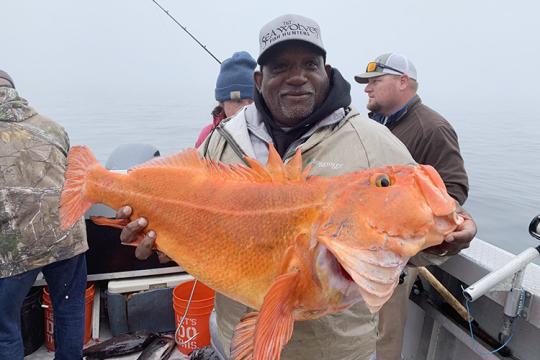
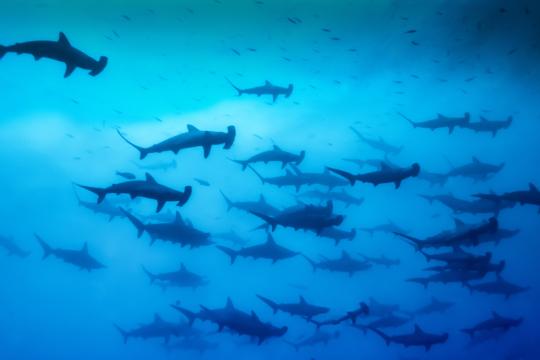
Global Extinction Risk for Sharks and Rays Is High, United States may Provide Haven
 Juvenile coho salmon. Credit: iStock
Juvenile coho salmon. Credit: iStock
NOAA Fisheries Releases 2023 Status of Stocks
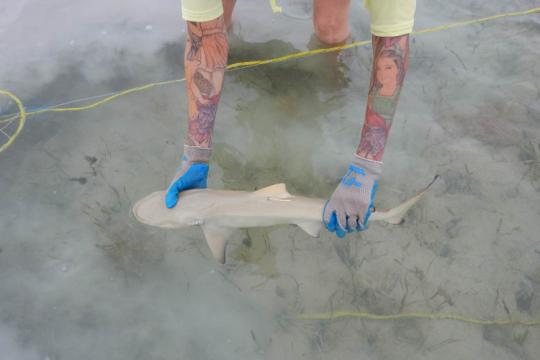 Previously tagged lemon shark Negaprion acutidens recaptured during survey
Previously tagged lemon shark Negaprion acutidens recaptured during survey
Science Overview
NOAA Fisheries conducts various research activities on the biology, behavior, and population health of Atlantic shortfin mako. The results of this research are used to inform management decisions for this species.
For detailed information about stock status, management, assessments, and resource trends, you can search for Atlantic shortfin mako, and any other species of interest, using NOAA’s StockSMART web tool.
Atlantic Shortfin Mako Research in the Northeast and Southeast
NOAA Fisheries conducts shark research in the Northeast, studying shark life history and performing long-term monitoring activities essential for stock assessment and management. NOAA’s Northeast and Southeast Fisheries Science Centers are also working with scientists from the Canadian Department of Fisheries and Oceans and the Portuguese Institute for the Ocean and Atmosphere on updating the life history information on shortfin mako sharks in the Atlantic Ocean.
Tagging and Tracking Atlantic Shortfin Mako
NOAA Fisheries runs the Cooperative Shark Tagging Program to study the life history of Atlantic sharks. Started in 1962, the program involves thousands of recreational and commercial fishermen, scientists, and fisheries observers. Participants tag large coastal and pelagic sharks and record information about the shark, such as the date and location where caught, gear used, and the size and sex of the shark.
Last updated by NOAA Fisheries on 06/20/2025
Research
Northeast Shark Research
We conduct shark life history research and long-term monitoring activities essential for stock assessment and management.
Last updated by NOAA Fisheries on 06/20/2025
